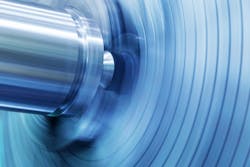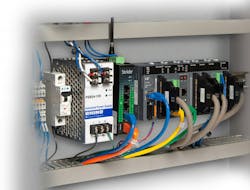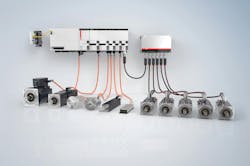Taking Stock of Modern Motion Control
Coleman: The motion controller interfaces with the drive via I/O or digital communication and tells the drive what to do. The drive powers the motor and controls its torque, velocity or position, so that the system can produce the desired motion. The motion profile command can be generated in the motion controller or in the drive itself. Another common component tends to be some form of interface for a machine operator.
The motion controller receives input signals from such sources such as sensors, a vision system, a barcode reader, a higher-level computer program or a human operator. Based on the received signals, the motion controller’s program makes decisions about how to control the motion. Feedback sensors and encoders provide motion feedback to the drive or motion controller, so it can adjust the commanded motion as needed in real time.
Prellwitz: We do fieldbus-based drives in which we control every aspect of the motion control component through our software. A practice that has evolved over time is to integrate the motor and the drives together in a motor-drive combination. You still have a power connection going to the back of the motors and the fieldbus network going to the motor as well.






